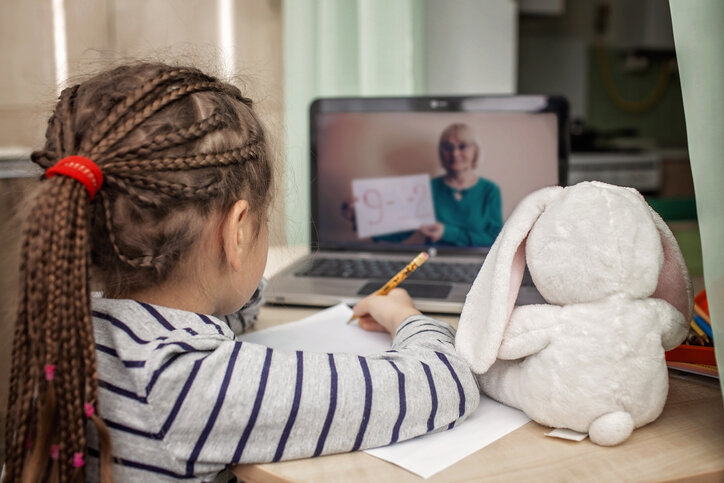In the face of a contingency that demands isolation, screen time for children and adults is increasing. How to deal with this increase in hours in front of the screen?
Several weeks after thousands of institutions around the world started online programs to accommodate precautionary measures; a concern has beset parents. Is it not too much time in front of the screen?
Face-to-face education offers advantages such as the physical presence of a teacher, the psychological effect of leaving the classroom for recess, going home to do other activities, and completing assignments at home. Online education or rather, remote emergency teaching, on the other hand, means that the child remains seated in front of a screen, sometimes for several hours. The biggest challenge in this situation is to keep children still and attentive without those changes of scene that allow them a necessary rest and a re-boot of their cognitive abilities. This difficulty has already made a dent both in children and parents, who are responsible for making them attend classes.
Before and after COVID-19
Before the contingency, children in the United States between 8 y 12 years old spent an average of 4 hours and 44 minutes a day in front of a screen, and teenagers, 7 hours and 22 minutes, not including school activities. After the pandemic outbreak and the isolation measures that led to the closure of thousands of schools worldwide, distance education was presented as a solution to ensure the continuation of curricular programs. As a result, the time that boys and girls between 6 and 12 years old spent in front of a screen increased 50% during the quarantine, according to a study.
“Broadly speaking, children are spending 2.5 to 3 hours more per day in front of a screen,” says Dylan Collins, CEO of SuperAwesome, a technology company focused on children and which conducted the study about the hours spent in front of the screen. According to the psychiatrist Colette Poole-Boykin, there is a formula to decipher how much time a child should spend concentrating on a task and not get overloaded. The procedure is to multiply the age of the child by 2 to 5 minutes; the calculation gives the amount of time they can maintain concentration. This would be approximately one to two hours per day for elementary school children, two to three hours for high school students, and three to four for college undergraduates.
“Broadly speaking, children are spending 2.5 to 3 hours more per day in front of a screen.”
The accumulation of those extra daily hours that the SuperAwesome study highlights can be overwhelming for any child, mainly if a good portion of those hours must be devoted to effective learning and homework. However, in this period, we are playing with different rules, given that distance education is the only viable solution to continue the work of educational institutions until the end of the contingency. How then to deal with this increase of hours in front of the screen?
Focus on quality of content and interaction
Screen time is an essential indicator of healthy technology habits for both adults and minors. Still, in a contingency situation, it is necessary to re-evaluate our relationship with screens. Due to the isolation, it is more challenging to set the limits recommended by institutions such as the World Health Organization and the Australian Government Department of Health, which also published particular recommendations to implement during the quarantine.
In this time of health emergency, for many, the screen is the window to the world and an educational resource. Instead of adding stress to a constant situation of tension trying to limit screen time, it is advisable to apply measures that ensure that the content that children consume is quality and has a definite purpose. Also, accompaniment is crucial to be sure that children have a healthy relationship with technology at home. For the younger ones, the activity of co-viewing is recommended in which parents see content together with their children and explain the ideas discussed in it. For older children, co-engaging is more appropriate, where they can view content and interact in the company of someone else who has the same level of interest.
Screen time must not be a time of inactivity but a vehicle for face-to-face social activity. Having some physical company and socializing with others while sharing time in front of a screen is crucial to maintaining healthy technology habits during the isolation.
This article from Observatory of the Institute for the Future of Education may be shared under the terms of the license CC BY-NC-SA 4.0 
)
)


)